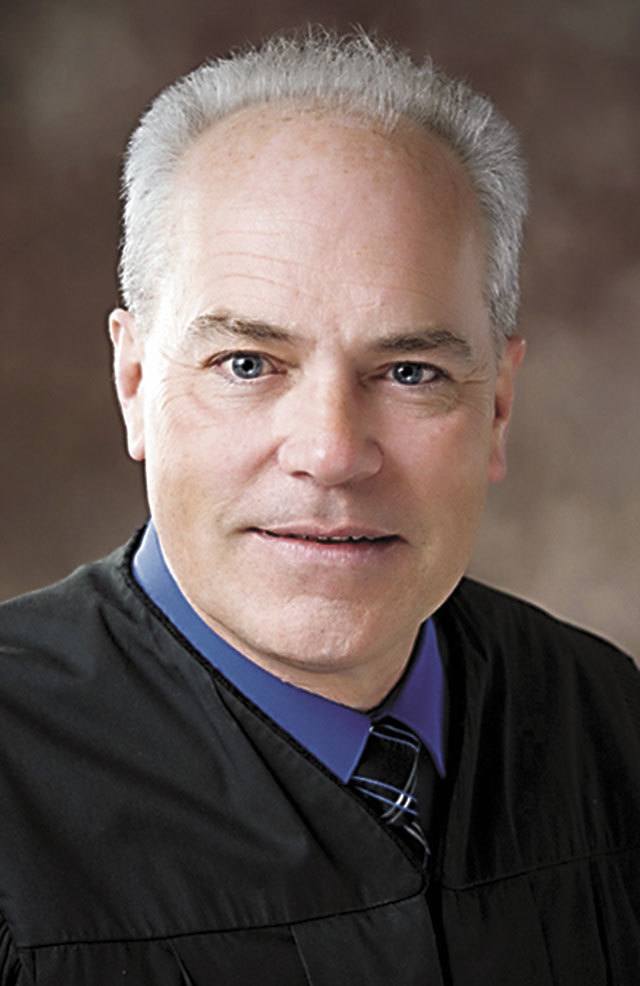Construction of a 150-foot Sequim-area radio-cell tower has cleared a key legal challenge but could face another court hurdle.
Clallam County Superior Court Judge Erik Rohrer ruled Feb. 7 against Dungeness Heights Homeowners LLC’s land use petition.
Rohrer affirmed Hearing Examiner William Payne’s decision that the radio-cell tower can be built at 766 Brigadoon Blvd. on a 9.3-acre forested, partially sloped ridge.
In doing so, he ruled in favor of cell tower owner Radio Pacific Inc., landowner Shirley Tjemsland and Clallam County.
The radio-cell tower will be disguised as a Douglas-fir tree and will include cellphone colocation panels as part of an estimated $500,000 project that will add a new radio station to the North Olympic Peninsula.
Radio Pacific, Tjemsland and the county must next prepare an order on Rohrer’s opinion for Rohrer to sign, Superior Court Administrator Lindy Clevenger said on Feb. 9.
Dungeness Heights Homeowners (DHH) will have 30 days from when that order is signed to appeal the decision.
Olympia lawyer Gerald Steel, representing DHH, said last week he is considering options for appealing the decision and did not have time Feb. 9 to comment on the ruling.
In a sweeping affirmation of Payne’s March 3, 2016, ruling, Rohrer said all of Payne’s findings “are supported by substantial evidence” and that there were no erroneous interpretations or applications of the law.
“The court is satisfied that the hearing examiner carefully applied each of the variance criteria and balanced competing considerations appropriately,” Rohrer wrote.
Radio Pacific owner Brown M. Maloney of Sequim, who also owns KONP-AM and KSTI-FM in Port Angeles, said he hopes to have the radio tower up and transmitting radio station signals on an FM band by the end of this year.
The company has about a year to begin transmitting the new radio signals under its Federal Communications Commission license, Radio Pacific General Manager Todd Ortloff said.
Maloney said he did not know when two cellphone providers would add their colocation equipment to the tower.
The tower was raised to 150 feet to accommodate them, prompting the need for a variance and conditional use permit that Payne approved and which DHH challenged.
The 100-foot tower was the maximum height allowed under the county code.
“It’s a step in the process we had to take,” Maloney said. “I’m not sitting here gloating. It’s just business.”
Nobody likes change, Maloney said.
“While we genuinely empathize with the DHH group, at the same time I cannot tell you the sheer numbers of responses that we’ve received, including from the Tjemslands, that we’ve heard from and that do also support this,” he said.
Maloney compared the need for the tower with a need for The Home Depot in Sequim.
“A community has to have services such as shopping,” he said.
“It’s a matter of making sure it’s done in the right location where there is consistency and everything is done by the book.”
The county Department of Community Development had recommended denial of the proposal until the visual impacts of increasing the height to 150 feet were addressed.
Project consultant Bryon Gunnerson of Sequim has estimated the project will cost $500,0o0, with at least $200,000 taken up by designing and building the faux fir that will camouflage the tower.
It will consist of a hollow steel trunk with composite plastic and fiberglass branches.
It will be on an undeveloped parcel in a heavily forested terrain and will be surrounded by a landslide area, wetlands, potholes and a gravel pit, according to Payne’s decision as referred to by Rohrer.
It also is on a ridge that descends in all directions and is unsuitable for the type of development similar to that of other property owners in the area, according to Payne’s decision.
Rohrer said DHH was unable to prove with site-specific information that the variance approved by Payne would hurt area property values.
In addition, health concerns that were raised by project opponents could not be addressed by Rohrer because they were pre-empted by federal law, Rohrer said.
Rohrer also rejected DHH’s contention that the radio-cell tower would compromise “the spirit” of the county code by failing to protect natural views and neighborhood aesthetics and by failing to preserve private property values.
“While it is difficult to identify the true ‘spirit’ of Clallam County’s zoning code, it appears to be an attempt at balancing competing interests rather than forwarding a single definitive guiding principle,” Rohrer wrote.
Paul Gottlieb is a senior staff writer with the Olympic Peninsula News Group, which is composed of Sound Publishing newspapers Peninsula Daily News, Sequim Gazette and Forks Forum. He can be reached at 360-452-2345, ext. 55650, or at pgottlieb@peninsuladailynews.com.



